Find these planets in June 2021: Jupiter, Saturn, Mars, Venus, Mercury
Try Stellarium for a precise view from your location.
Click here for recommended almanacs, which provide precise rise and set times.
Moon guide to bright planets in June
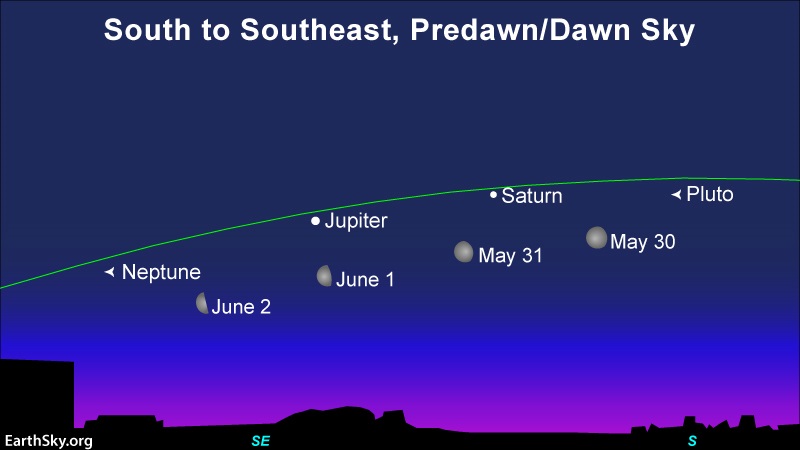

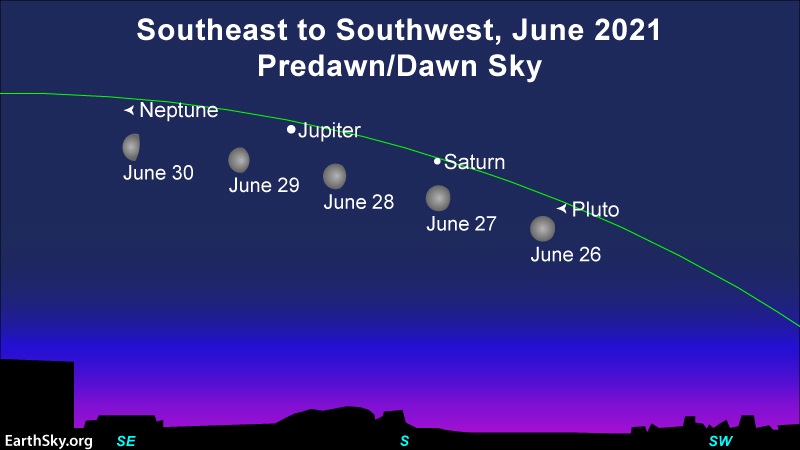
‘Ring of fire’ solar eclipse June 10
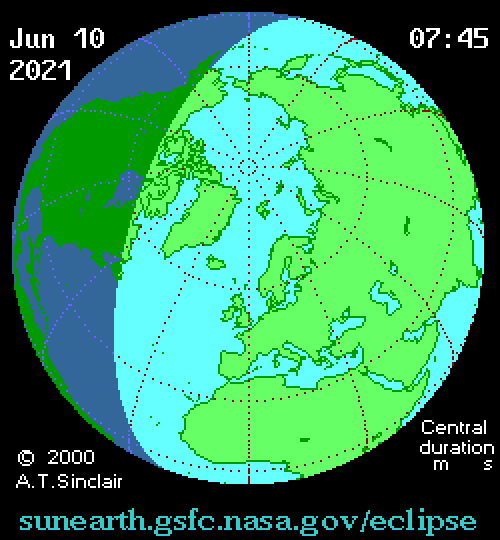
Venus and Mars
The brightest planet Venus and red planet Mars remain fixtures of the early evening sky throughout June 2021. Although Mars looms higher up in the western sky after sunset – and stays out longer after dark – than Venus does, Mars will be the harder planet to spot. After all, Venus – the brightest of all planets – outshines Mars by more than a hundredfold.
Your best bet is to first spot dazzling Venus, as it pops out at dusk, way before any other bright star. You’ll likely spot Venus blazing away quite low in your western sky some 40 to 45 minutes (or sooner) after sunset. Use this bright beacon to find your way to Mars, which comes out as evening twilight gives way to nightfall. Early in the month, you might not see Mars until after Venus sets. To find out Venus’ setting time, go to TimeandDate or Old Farmer’s Almanac.
Mars is fairly easy to see in a dark sky. But it’s best to seek out modestly-bright Mars at early evening, when it’s still relatively high above your western horizon. We give you fair warning! The red planet is only going to get fainter as this year progresses. In the months ahead, Mars will surely dim as – day by day – it lags farther behind Earth in the great race of the planets, and sinks closer to the setting sun.
At mid-northern latitudes, Mars sets about one hour after nightfall (end of astronomical twilight) in early June, and around nightfall by the month’s end.
At temperate latitudes in the Southern Hemisphere, Mars sets about 1 1/2 hours (90 minutes) after nightfall in early June, and about one hour after nightfall by the month’s end.
Find out both the sunset time and the time of nightfall (end of astronomical twilight) via TimeaandDate
While Mars is sinking toward the setting sun by the day, Venus is climbing upward, away from the sunset. Next month, these two words will meet up for a close-knit conjunction on July 13, 2021. After that, Venus will supplant Mars as the higher evening planet.
Mars, though nominally an evening planet until October 2021, will likely be out of sight and out of mind by August 2021. By that time, expect Mars to succumb to the glow of evening twilight.
Read more: What to expect from Mars in 2021
On the other hand, Venus boldly shines in the evening sky for the rest of this year, to reach its greatest elongation from the sun on October 29, 2021 (see diagram below), and to attain its greatest brilliance as the evening “star” around the time of the new moon on December 4, 2021. Circle this date on your calendar, and see if it’s true that Venus can cast a shadow on a dark night!
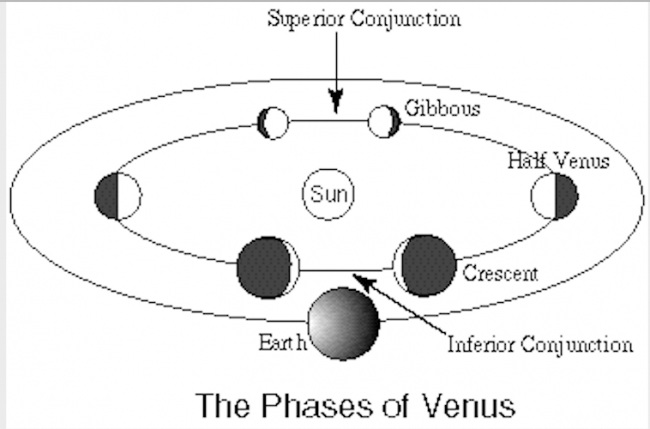
Jupiter and Saturn
Giant planet Jupiter and ringed Saturn can be found in June 2021 late at night and in the hours before sunrise. If you’re a night owl, you might catch these two planets low in your southeast sky before bedtime. The early bird still has the advantage, though, as these two worlds appear much higher up the sky during the predawn hours.
Saturn rises first. At mid-northern latitudes, Saturn comes up around local midnight at the beginning of the month, and around mid-evening by the month’s end. (By midnight, we mean midway between sunset and sunrise.) Jupiter follows Saturn into the sky about an hour later.
At temperate latitudes in the Southern Hemisphere, Saturn rises around mid-to-late evening in early June, and by the month’s end, comes up at early-to-mid evening evening. Jupiter follows Saturn into the sky around 1 1/2 hours later.
For more specific information on when Jupiter and Saturn rise into your sky, consult either The Old Farmer’s Almanac (U.S. and Canada) or TimeandDate (worldwide).
Use the moon to help guide you to Jupiter and Saturn in late May and early June 2021, and then again late in the month, from about June 27 to 29.
Mercury
Mercury – the innermost planet – isn’t easily visible in June 2021. This planet is low in the west after sunset when the month begins. It’ll exit the evening sky and enter the morning sky when it passes between the Earth and sun (at inferior conjunction) on June 11, 2021. Alert sky watchers have a chance to catch Mercury in the morning sky – in the east before sunrise – by the last week of June. By early July, Mercury will appear more easily visible in the east before the sun. The waning moon will point to it, and pass near it, on July 5, 6, 7 and 8. Read more about Mercury in early July.
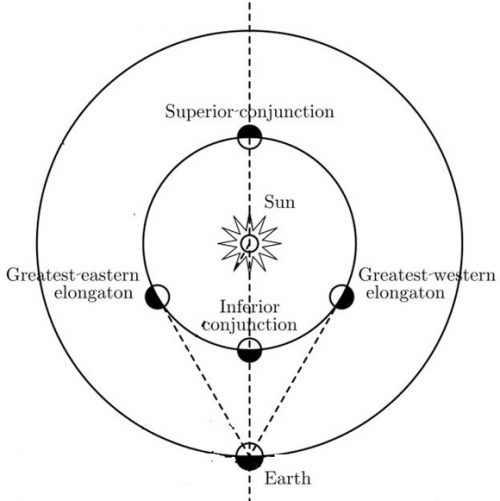
What do we mean by bright planet?
By bright planet, we mean any solar system planet that is easily visible without an optical aid and that has been watched by our ancestors since time immemorial. In their outward order from the sun, the five bright planets are Mercury, Venus, Mars, Jupiter and Saturn. These planets actually do appear bright in our sky. They are typically as bright as – or brighter than – the brightest stars. Plus, these relatively nearby worlds tend to shine with a steadier light than the distant, twinkling stars. You can spot them, and come to know them as faithful friends, if you try.

Don’t miss anything. Subscribe to EarthSky News by email
Visit EarthSky’s Best Places to Stargaze to find a dark-sky location near you.
Help EarthSky keep going! Donate now.
Post your planet photos at EarthSky Community Photos.
The post June 2021 guide to the bright planets first appeared on EarthSky.
from EarthSky https://ift.tt/2SL2h7q
Find these planets in June 2021: Jupiter, Saturn, Mars, Venus, Mercury
Try Stellarium for a precise view from your location.
Click here for recommended almanacs, which provide precise rise and set times.
Moon guide to bright planets in June



‘Ring of fire’ solar eclipse June 10

Venus and Mars
The brightest planet Venus and red planet Mars remain fixtures of the early evening sky throughout June 2021. Although Mars looms higher up in the western sky after sunset – and stays out longer after dark – than Venus does, Mars will be the harder planet to spot. After all, Venus – the brightest of all planets – outshines Mars by more than a hundredfold.
Your best bet is to first spot dazzling Venus, as it pops out at dusk, way before any other bright star. You’ll likely spot Venus blazing away quite low in your western sky some 40 to 45 minutes (or sooner) after sunset. Use this bright beacon to find your way to Mars, which comes out as evening twilight gives way to nightfall. Early in the month, you might not see Mars until after Venus sets. To find out Venus’ setting time, go to TimeandDate or Old Farmer’s Almanac.
Mars is fairly easy to see in a dark sky. But it’s best to seek out modestly-bright Mars at early evening, when it’s still relatively high above your western horizon. We give you fair warning! The red planet is only going to get fainter as this year progresses. In the months ahead, Mars will surely dim as – day by day – it lags farther behind Earth in the great race of the planets, and sinks closer to the setting sun.
At mid-northern latitudes, Mars sets about one hour after nightfall (end of astronomical twilight) in early June, and around nightfall by the month’s end.
At temperate latitudes in the Southern Hemisphere, Mars sets about 1 1/2 hours (90 minutes) after nightfall in early June, and about one hour after nightfall by the month’s end.
Find out both the sunset time and the time of nightfall (end of astronomical twilight) via TimeaandDate
While Mars is sinking toward the setting sun by the day, Venus is climbing upward, away from the sunset. Next month, these two words will meet up for a close-knit conjunction on July 13, 2021. After that, Venus will supplant Mars as the higher evening planet.
Mars, though nominally an evening planet until October 2021, will likely be out of sight and out of mind by August 2021. By that time, expect Mars to succumb to the glow of evening twilight.
Read more: What to expect from Mars in 2021
On the other hand, Venus boldly shines in the evening sky for the rest of this year, to reach its greatest elongation from the sun on October 29, 2021 (see diagram below), and to attain its greatest brilliance as the evening “star” around the time of the new moon on December 4, 2021. Circle this date on your calendar, and see if it’s true that Venus can cast a shadow on a dark night!

Jupiter and Saturn
Giant planet Jupiter and ringed Saturn can be found in June 2021 late at night and in the hours before sunrise. If you’re a night owl, you might catch these two planets low in your southeast sky before bedtime. The early bird still has the advantage, though, as these two worlds appear much higher up the sky during the predawn hours.
Saturn rises first. At mid-northern latitudes, Saturn comes up around local midnight at the beginning of the month, and around mid-evening by the month’s end. (By midnight, we mean midway between sunset and sunrise.) Jupiter follows Saturn into the sky about an hour later.
At temperate latitudes in the Southern Hemisphere, Saturn rises around mid-to-late evening in early June, and by the month’s end, comes up at early-to-mid evening evening. Jupiter follows Saturn into the sky around 1 1/2 hours later.
For more specific information on when Jupiter and Saturn rise into your sky, consult either The Old Farmer’s Almanac (U.S. and Canada) or TimeandDate (worldwide).
Use the moon to help guide you to Jupiter and Saturn in late May and early June 2021, and then again late in the month, from about June 27 to 29.
Mercury
Mercury – the innermost planet – isn’t easily visible in June 2021. This planet is low in the west after sunset when the month begins. It’ll exit the evening sky and enter the morning sky when it passes between the Earth and sun (at inferior conjunction) on June 11, 2021. Alert sky watchers have a chance to catch Mercury in the morning sky – in the east before sunrise – by the last week of June. By early July, Mercury will appear more easily visible in the east before the sun. The waning moon will point to it, and pass near it, on July 5, 6, 7 and 8. Read more about Mercury in early July.

What do we mean by bright planet?
By bright planet, we mean any solar system planet that is easily visible without an optical aid and that has been watched by our ancestors since time immemorial. In their outward order from the sun, the five bright planets are Mercury, Venus, Mars, Jupiter and Saturn. These planets actually do appear bright in our sky. They are typically as bright as – or brighter than – the brightest stars. Plus, these relatively nearby worlds tend to shine with a steadier light than the distant, twinkling stars. You can spot them, and come to know them as faithful friends, if you try.

Don’t miss anything. Subscribe to EarthSky News by email
Visit EarthSky’s Best Places to Stargaze to find a dark-sky location near you.
Help EarthSky keep going! Donate now.
Post your planet photos at EarthSky Community Photos.
The post June 2021 guide to the bright planets first appeared on EarthSky.
from EarthSky https://ift.tt/2SL2h7q

Aucun commentaire:
Enregistrer un commentaire